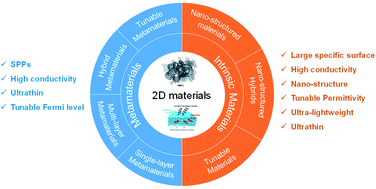Recent progress in two-dimensional materials for terahertz protection
Abstract
With the wide applications of terahertz (THz) devices in future communication technology, THz protection materials are essential to overcome potential threats. Recently, THz metamaterials (MMs) based on two-dimensional (2D) materials (e.g., graphene, MXenes) have been extensively investigated due to their unique THz response properties. In this review, THz protection theories are briefly presented first, including reflection loss and shielding mechanisms. Then, the research progress of graphene and other 2D material-based THz MMs and intrinsic materials are reviewed. MMs absorbers in the forms of single layer, multiple layers, hybrid and tunable metasurfaces show excellent THz absorbing performance. These studies provide a sufficient theoretical and practical basis for THz protection, and superior properties promised the wide application prospects of 2D MMs. Three-dimensional intrinsic THz absorbing materials based on porous and ordered 2D materials also show exceptional THz protection performance and effectively integrate the advantages of intrinsic properties and the structural characteristics of 2D materials. These special structures can optimize the surface impedance matching and enable multiple THz scatterings and electric transmission loss, which can realize high-efficiency absorption loss and active controllable protection performance in ultra-wide THz wavebands. Finally, the advantages and existing problems of current THz protection materials are summarized, and their possible future development and applications are prospected.

- This article is part of the themed collection: Popular Advances


 Please wait while we load your content...
Please wait while we load your content...